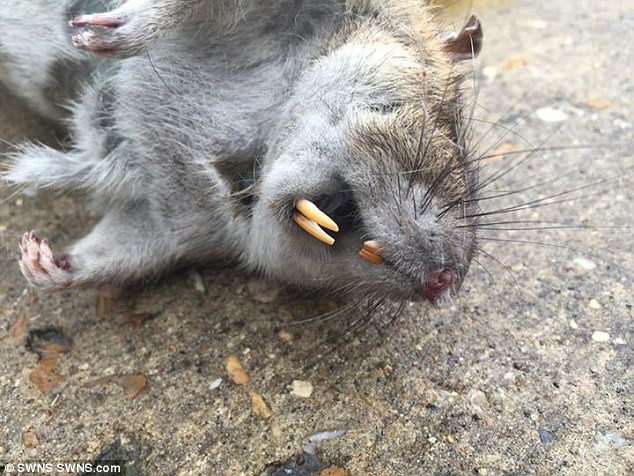You plan to release genetically modified mice to deal with the rat pandemic
The mutant mice could be released across the UK to cope with the growing mouse problem.
Experts at the University of Edinburgh, UK, said the process called " gene drive" could help treat rat pandemic, Telegraph reported yesterday. Through the transmission of infertility genes in the population, this process can lead to a serious decline in numbers in several generations. The prospect of the new method was introduced by the team in an article published in Cell Press magazine.
The numbers announced by authorities last week show that councils in London receive 100 complaints about rats and mice every day. Some provinces reported a 10% increase in the number of rats since last year. More than 10 million rats are living across the UK and the cost of killing mice is up to 1.6 million USD per year.

An oversized large mouse caught in Humberston, Lincolnshire.(Photo: SWNS).
Most experts treat pests using rat poison, but rats quickly develop resistance to even the most powerful toxins. Using rat poison can also harm many pets and other animals.
Genomic methods have been tested in mosquitoes, helping to control diseases such as malaria and zika. Scientists want to find out if this method works in mammals.
The technology used, a natural process in which bacteria fight the virus by cutting off their DNA. The mice will be genetically modified in the laboratory before being released into the wild, where they can mate with native populations.
"For the first time we have the technology that can reduce or eradicate pest populations in a humane way and target specific species. Crispr may be the most interesting tool in biology, and a merit. "Great tool to isolate gene functions. It's time to discover what this technology can do , " said Professor Bruce Whitelaw at Roslin Institute at Edinburgh University.
The team proposed using the "X chromosome" removal technique for rats. Male mammals have both X and Y sex chromosomes, while females need two X chromosomes. Scientists want to insert the "X chromosome" code into the male mouse's DNA, helping to break down destroy the X chromosome in their sperm. Thus, they can only pass on the Y chromosome, making young children never females. As the number of females becomes less and less over time, the rat population will decline.
However, researchers do not rule out the possibility that genetically modified animals can escape populations that need to target and affect exotic ecosystems.
"This is an emerging technology, so there are many risks involved and we are looking for ways to better understand those risks. One of the biggest risks we are concerned about if this technology is applied. We target an animal and it spreads to an out-of-target individual. You target rats in New Zealand and the impact can spread to Asia, leading to unpredictable ecological consequences. But we can take measures to mitigate the consequences if this happens, " said Gus McFarlane, a PhD student at Roslin Institute.
- The Japanese laboratory almost snapped the genetically modified mice
- Countering genetically modified corn causes cancer in mice
- Genetically modified salmon in the US is controversial
- Using genetically modified foods is prone to cancer
- Mine detection with genetically modified mice
- Genetically modified plants still cause doubts
- Listen to mice 'sing' like birds
- Genetically modified food in Vietnam ever since?
- Biosecurity management with genetically modified organisms
- 6 academies rejected the study of GM maize causing cancer
- Things you should know about GMO genetically modified foods
- Genetically modified insects threaten genetically modified plants
 Animal 'suffering' after hibernation
Animal 'suffering' after hibernation Why do goats climb well?
Why do goats climb well? Scientists were surprised to see chimpanzees eating turtles
Scientists were surprised to see chimpanzees eating turtles Giant catfish died deadly due to drought in Thailand
Giant catfish died deadly due to drought in Thailand Video: Facing a rat epidemic, Australian farmers create giant traps to catch thousands of rats every night
Video: Facing a rat epidemic, Australian farmers create giant traps to catch thousands of rats every night  Why are male rats so scared of bananas?
Why are male rats so scared of bananas?  'Sacrifice' for science, lab rats are under heavy stress
'Sacrifice' for science, lab rats are under heavy stress  The only place in the world that 'wipes out' mice
The only place in the world that 'wipes out' mice  The researchers built a tiny car to teach mice to drive
The researchers built a tiny car to teach mice to drive  Monkeys eat rat meat, astonishing researchers
Monkeys eat rat meat, astonishing researchers 